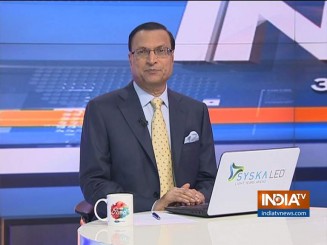 India and China on Tuesday agreed on “gradual, verifiable” disengagement from the Line of Actual Control in Ladakh with hopes that this would soon lead to reduction in deployment of troops by both sides. This was decided after a 15-hour-long meeting between 14 Corps commander Lt Gen Harinder Singh and South Xinjiang Military District chief Major Gen Liu Lin.
India and China on Tuesday agreed on “gradual, verifiable” disengagement from the Line of Actual Control in Ladakh with hopes that this would soon lead to reduction in deployment of troops by both sides. This was decided after a 15-hour-long meeting between 14 Corps commander Lt Gen Harinder Singh and South Xinjiang Military District chief Major Gen Liu Lin.
The proof of the pudding now lies in the eating. The commanders had arrived at a similar consensus on June 6, but the Chinese troops treacherously attacked an Indian army colonel and his jawans in Galwan valley while withdrawing from their patrolling post.
India is closely monitoring the pullback through drones and surveillance aircraft. According to the agreement, there will be de-induction of additional battalions, artillery guns and armoured vehicles from ‘depth or near areas’ of confrontation site by both sides. The disengagement will begin in Galwan valley and Gogra-Hot Springs. An official statement issued by both countries said, “there was a mutual consensus to disengage. The modalities for disengagement from all friction areas in eastern Ladakh were discussed and will be taken forward by both sides”.
There is however uncertainty about Chinese troops withdrawal from Pangong lake, where the enemy has put up dozens of new fortifications and pill-boxes and has taken up positions on commanding heights on the north bank of the lake.
Senior Indian army officers are satisfied with Tuesday’s agreement. China has been clearly told that it must withdraw its troops to April, 2020 positions, to which the Chinese army agreed. Those who know the working of Chinese army well, say that China needs to be kept on a tight leash. The Chinese army always tries to intimidate its adversaries first, and if the adversary is undaunted, the Chinese then withdraw.
Let me share one interesting observation. The ten Indian army personnel including officers, who followed the fleeing Chinese soldiers into their territory and were held captive, narrated on their return, how the Chinese officers were stunned by the ferocity of our jawans when they saw their commanding officer killed.
Our brave jawans were less in number compared to the Chinese, but they fought back ferociously, snatched the spiked iron rods from the Chinese soldiers and used their own weapons to beat them with. Our jawans killed several Chinese soldiers by slashing off their necks with the spiked rods. The Indian army officers who returned from captivity revealed that the Chinese commanders were worried about the brave Indian response. On Tuesday, army chief Gen M M Narwane reached Leh to meet the injured jawans and boosted their morale.
The Chinese commanders are now cautious about any further escalation after the death of their 43 soldiers, including a commanding officer. The question now is: what next?
China is always up to its nefarious tricks like carrying out sneaky intrusions on the LAC. Since China is not a democratic nation, matters pertaining to military are never discussed there in public. The entire Chinese media, whether print of television, is under state control, and is used as propaganda tool across the world. The Chinese media regularly circulates false stories, rumours and fake videos. The US does not consider the major Chinese media outlets as free media, but as “diplomatic missions” who serve the interests of their government. The US is thinking of imposing the same restrictions on Chinese media that are imposed on movement of Chinese diplomatic personnel.
Already there is a US intelligence report published in ‘US News’ about senior PLA officer General Zhao Zongqi, who is in charge of Chinese army’s western theatre command, having given orders to his troops to treacherously attack the Indians in Galwan valley. Gen Zhao is consider.ed close to President Xi Jinping. When Xi carried out purge of senior Chinese generals several years ago, Gen Zhao was not touched. He was given charge of Tibet and Xinjiang military districts, and since then there has been military buildups and LAC transgressions by the Chinese, that led to the standoff in Doklam in 2017, and then in Naku La, Pangong lake and Galwan valley.
The Chinese army also indulges in psychological operations by circulating fake videos, but they do not stand critical scrutiny. The lies are soon exposed. Like most of the Chinese products, their lies and tricks are not durable. The Indian leadership is preparing a tough policy, to counter Chinese designs, through different methods: militarily, diplomatically and economically.